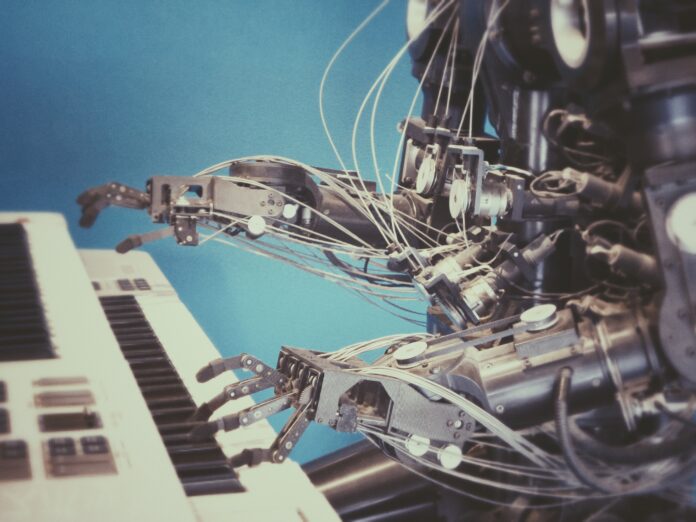Hyperautomation is a transformative approach that combines various technologies, such as artificial intelligence (AI), machine learning (ML), robotic process automation (RPA), and advanced analytics, to streamline and optimize business processes. By harnessing the power of automation across an organization, hyperautomation aims to enhance efficiency, productivity, and agility, while also driving innovation and growth. This comprehensive strategy empowers enterprises to automate both simple and complex tasks, enabling them to achieve unprecedented levels of operational excellence and competitive advantage.
At its core, hyperautomation represents the evolution of traditional automation practices, which typically focused on individual tasks or processes. Instead of isolated automation efforts, hyperautomation seeks to orchestrate a multitude of technologies to automate end-to-end workflows. By leveraging AI and ML capabilities, hyperautomation enables systems to learn from data, adapt to dynamic scenarios, and make intelligent decisions. This intelligent automation goes beyond rule-based approaches, allowing organizations to automate complex cognitive tasks that previously required human intervention.
The concept of hyperautomation is closely aligned with the broader trends of digital transformation and Industry 4.0. As organizations strive to become more digitally mature, they recognize the need to automate processes, eliminate manual interventions, and leverage data-driven insights for better decision-making. Hyperautomation serves as a key enabler in this journey, providing a framework to identify, prioritize, and automate various business processes across departments and functions.
One of the fundamental principles of hyperautomation is the concept of the “digital twin.” A digital twin is a virtual replica of a physical entity, such as a product, process, or system. By creating a digital twin, organizations can simulate and analyze the behavior and performance of the real-world counterpart. This digital representation serves as a foundation for automation, allowing businesses to optimize processes, predict outcomes, and identify potential bottlenecks or inefficiencies. With hyperautomation, digital twins can be integrated with AI and ML algorithms to continuously improve and automate operations in real-time.
Hyperautomation encompasses a wide range of technologies and techniques that work together to achieve automation at scale. Robotic process automation (RPA) is a critical component of hyperautomation, enabling the automation of repetitive, rule-based tasks typically performed by humans. RPA bots can mimic human interactions with software applications, performing tasks such as data entry, report generation, and system integration. By automating these mundane tasks, organizations can free up valuable human resources to focus on higher-value activities that require creativity and critical thinking.
In addition to RPA, hyperautomation leverages AI and ML algorithms to automate more complex and cognitive tasks. Natural language processing (NLP) allows systems to understand and interpret human language, enabling chatbots and virtual assistants to interact with users and provide support. Computer vision technologies enable machines to perceive and understand visual information, enabling applications such as image recognition, object detection, and autonomous vehicles. Machine learning algorithms enable systems to learn from data, make predictions, and improve performance over time.
Advanced analytics plays a crucial role in hyperautomation by providing insights and intelligence to guide decision-making. By analyzing vast amounts of data, organizations can uncover patterns, trends, and correlations that can inform process optimization and identify opportunities for automation. Predictive analytics can help forecast future outcomes, enabling businesses to proactively address potential issues or capitalize on emerging opportunities. Furthermore, prescriptive analytics can suggest optimal actions based on a given set of circumstances, enabling organizations to make data-driven decisions with confidence.
To successfully implement hyperautomation, organizations need to adopt a holistic and systematic approach. The first step is to identify and prioritize the processes that are suitable for automation. This involves conducting a thorough assessment of existing processes, evaluating their complexity, frequency, and potential impact on business outcomes. Organizations should consider factors such as process standardization, data availability, and the level of human intervention required. By analyzing these factors, businesses can determine which processes are prime candidates for hyperautomation and can deliver the most significant benefits.
Once the processes are identified, organizations can begin designing the automation solution. This involves mapping out the end-to-end workflow, understanding the inputs, outputs, and dependencies of each step. Collaboration between business and IT teams is crucial during this phase to ensure a comprehensive understanding of the process and its automation requirements. It may also involve re-engineering or redesigning certain steps to optimize efficiency and compatibility with automation technologies.
Next, organizations need to select the appropriate automation technologies that align with their process requirements. This may involve integrating multiple tools and platforms to achieve the desired automation outcomes. For instance, a combination of RPA, AI, ML, and analytics tools may be needed to address different aspects of the process. The selection of technology should consider factors such as scalability, compatibility with existing systems, ease of integration, and the potential for future enhancements.
Implementation of hyperautomation requires a well-defined governance framework. This framework establishes guidelines, policies, and standards for automation initiatives, ensuring consistency, compliance, and security across the organization. It outlines roles and responsibilities, establishes change management procedures, and defines metrics to measure the effectiveness of automation efforts. Additionally, organizations must consider ethical considerations surrounding automation, such as data privacy, bias mitigation, and the impact on the workforce.
As hyperautomation involves the convergence of various technologies, organizations should focus on building a robust and flexible IT infrastructure. This infrastructure should support the integration of diverse systems, data management, and security protocols. Cloud-based solutions can offer scalability, agility, and cost-effectiveness, enabling organizations to adapt to changing automation needs. Furthermore, organizations should prioritize data governance and ensure the availability, integrity, and accessibility of data to drive accurate automation and decision-making.
One of the critical success factors in hyperautomation is change management. Automation initiatives can disrupt existing processes, workflows, and job roles, leading to resistance and uncertainty among employees. Organizations need to invest in change management strategies that focus on communication, training, and engagement to help employees understand the benefits of hyperautomation and address any concerns or fears they may have. Collaboration between humans and machines should be emphasized, showcasing how automation can augment human capabilities and create new opportunities for growth and innovation.
Once hyperautomation is implemented, organizations can reap a multitude of benefits. Efficiency gains are a key advantage, as automation eliminates manual errors, reduces processing time, and enables round-the-clock operations. By automating repetitive and mundane tasks, employees can focus on more strategic activities that require creativity and critical thinking, driving employee satisfaction and productivity. Hyperautomation also enables organizations to achieve greater accuracy and consistency in their operations, leading to improved customer experiences and increased customer satisfaction.
Furthermore, hyperautomation facilitates data-driven decision-making by providing real-time insights and predictive analytics. Organizations can leverage these insights to optimize processes, identify bottlenecks, and proactively address issues before they escalate. This data-driven approach enables organizations to become more agile and responsive to market changes, fostering innovation and competitive advantage.
In conclusion, hyperautomation represents a revolutionary approach to automation, leveraging advanced technologies to streamline and optimize business processes. By combining AI, ML, RPA, and analytics, organizations can achieve end-to-end automation, driving efficiency, productivity, and innovation. The holistic and systematic implementation of hyperautomation, along with proper governance, infrastructure, and change management, can unlock significant benefits for organizations, ranging from improved operational efficiency and customer experiences to enhanced decision-making and competitive advantage. As organizations continue to embark on their digital transformation journeys, hyperautomation will undoubtedly play a pivotal role in shaping the future of work and business operations.














